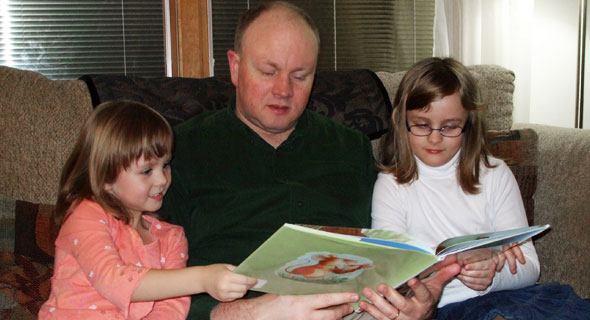
About John H
| Treatment Type | Peritoneal Dialysis |
| Gender | Male |
| Age | 40s |
| Marital Status | Married |
| Kids | Yes |
| Work Status | Working |
| Race | White |
| Pets | No |
| Cause | Unknown |
| Travel | No |
| Poor Vision | No |
When John first learned that he had kidney problems, he and his doctor came up with a game plan: John would get a transplant before his kidneys failed. But, his kidney disease got worse too quickly. Instead, john was faced with the need to start treatment right away.
Plan B
John's nephrologist sent him to a class to learn about each type of dialysis. He used what he learned to come up with a Plan B. "I had two main goals," said John. "I wanted to keep working (as a financial analyst). And, I wanted to keep my lifestyle as much as I could. I didn't want my life to change too much." With those goals in mind, John opted for peritoneal dialysis (PD) at home. "It seemed like the best choice," he explained. His nephrologist agreed.
Getting started
John did not have enough time to start PD right away. He did 2 weeks of in-center hemodialysis while he had a PD catheter placed and waited for it to heal. As soon as he could, John began training to do his own PD treatments at home through his clinic, Fresenius Medical Care Central Ohio East.
John and his wife, Becky, learned how to safely do PD in one week. "Kathy Nolen, our PD training nurse, was an excellent teacher," said John. "She spent a lot of time explaining what to do and why, and she answered all my questions." The training also had lots of hands-on practice doing PD exchanges with the same equipment and supplies that John and Becky would use at home. "We are trained to do both manual and cycler exchanges," noted John. "But, I knew from the start that I wanted to use the cycler so I could dialyze while I was sleeping."
Transition to home
John felt he was very well prepared when it was time to go home and do the treatments on his own. "It was a seamless transition," he recalls. "The repetition and consistency made home PD feel just like what we'd already done in training." John also values the support he gets from his clinic. "I never felt like I was out there without a net. I have an emergency beeper number and know I can call any time if there is a problem."
Settled in
Seven months after going home, John has settled into a PD routine. "My wife sets up the machine for me while I'm at work. Then, after dinner, I connect, do one exchange, and disconnect. With that exchange, I have a 1–2 hour dwell. At bedtime, I connect, drain, and then let the cycler do the rest of the work while I sleep."
In the morning, John disconnects, takes his vitals and gets ready to head off to work. "The total time on dialysis is about 10 hours and includes 7 dwells," he explained. John leaves some fluid in as he goes about his day.
PD makes it possible for John to keep working. It also gives him time to spend with his wife and three daughters. "I have a young family," said John, "and don't want to miss any more time with them than I have to. With PD, I can work and still have a few good hours at home each day." He uses some of that time to help his wife home-school their girls.
The rest of the family has also adjusted to dad's PD routine. "Becky was nervous at first," John admitted. "She didn't want to be responsible if there was an emergency or something went wrong." The training sessions helped Becky overcome her fears, and now she is as comfortable as John with the treatments. Even his daughters, who were a bit "skittish and scared" at first, now take his nightly treatments in stride. "My 4-year-old daughter likes to come in and check on me when I connect every night," John said.
A lifestyle choice
For John, PD has been a good choice. "Everyone has different demands on their time, "but from the perspective of lifestyle, PD does not disrupt what you normally do." John readily admits that doing PD at home requires discipline and attention to detail, but considers it his best treatment option for right now. He remains on the list for a transplant, and hopes that staying as healthy as possible with PD will improve the likelihood of a good outcome.

